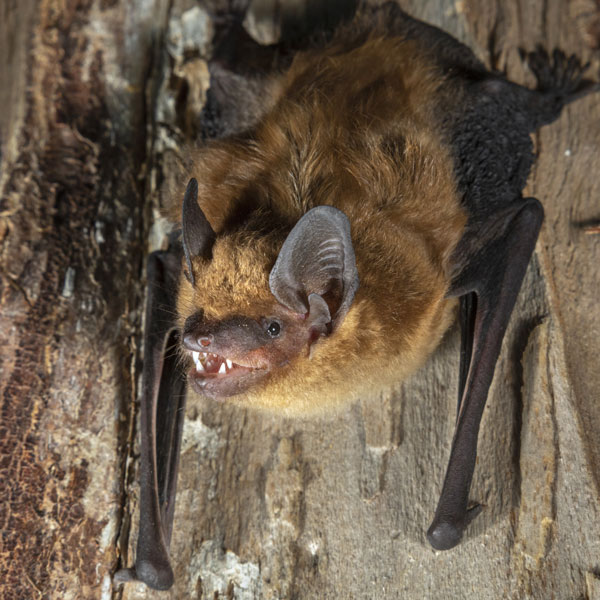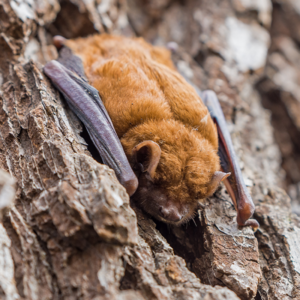Big Brown Bats in Iowa
The big brown bat, a prominent species known for its size, holds a wide presence throughout Iowa. It displays a remarkable ability to endure conditions that challenge other bat varieties, which explains its frequent sightings in cities, suburbs, and wooded areas alike. With a preference for beetles as their primary food source, these bats utilize their robust jaws to conquer the hard exoskeletons. Nonetheless, they also indulge in a varied diet comprising moths, flies, wasps, and flying ants. Colonies of these bats can range from 20 to 300 individuals, while their lifespan in the wild is notably lengthy. Regrettably, the majority succumb to malnutrition during their initial winter hibernation, making it a critical period for their survival.
Big Brown Bat Habitat
These bats are known to roost in various structures, including buildings and attics, where they can find suitable roosting spots. They prefer locations with easy access for entry and exit, such as gaps or openings in the exterior of buildings. In rural areas, big brown bats may roost in tree cavities. During summer, female big brown bats form maternity colonies, where they give birth and raise their pups. Big brown bats in Iowa also contribute to insect control by feeding on a wide variety of flying insects, including agricultural pests like beetles and moths. They are considered beneficial due to their role in regulating insect populations.
Big Brown Bat Behaviors, Threats, or Dangers
Especially during the winter, big brown bats may seek warmth by infiltrating homes and other structures, often settling in attics or walls. These bats can carry and transmit serious diseases, which is why it’s crucial to contact a professional wildlife control company should you encounter them in your space. As with many other bat species in Iowa, big brown bats are also threatened by the White-nose Syndrome, which can damage their populations. For that reason, they are a protected species that require professional handling.
Need help with Big Brown Bat control?
We'll call you! Leave your information below.


